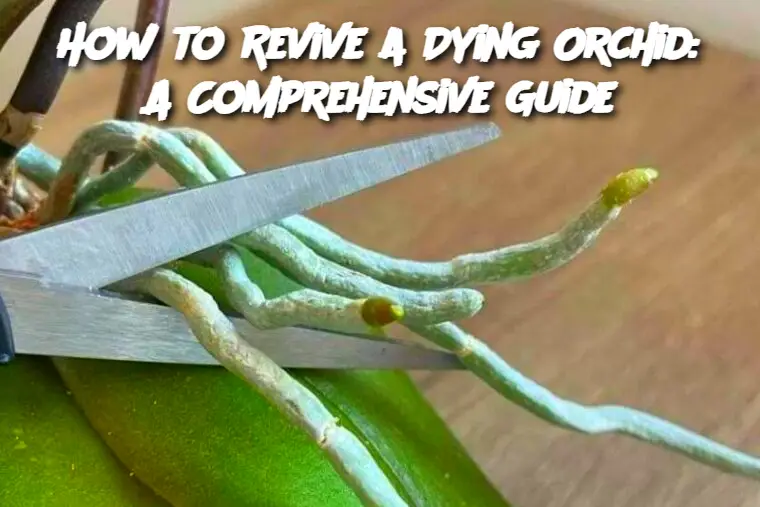ADVERTISEMENT
Introduction: Orchids are beautiful and elegant houseplants, prized for their unique flowers and vibrant colors. However, they can be quite sensitive and require specific care to thrive. If you've noticed that your orchid is not looking its best, there may be a few common reasons why it's struggling. From improper watering to inadequate light, understanding these factors can help you nurse your orchid back to health. In this guide, we’ll walk you through the common causes of orchid decline, how to identify them, and practical solutions to revive your plant.
Ingredients (or Key Factors for Orchid Health):
Proper Watering – Orchids need moisture but don't like to sit in water. Overwatering or underwatering can stress your orchid.
Appropriate Light – Orchids need bright, indirect light. Too much direct sunlight or too little can hinder their growth.
Humidity – Orchids thrive in humid environments, ideally between 50-70% humidity.
Proper Temperature – Orchids prefer temperatures between 65°F and 75°F (18°C-24°C).
Good Drainage – Orchids require well-draining pots to avoid root rot.
Fertilization – Regular but diluted orchid fertilizer promotes healthy growth.
Cleanliness – Dust, pests, and mold can hinder your orchid's health.
Instructions:
Check the Potting Mix and Watering Routine: Orchids are typically planted in a well-draining mix, such as bark or sphagnum moss. Check if the mix is compacted or decomposed, which could trap too much moisture. If the mix is old or soggy, replace it with a fresh, orchid-specific mix. Water your orchid only when the top inch of soil feels dry. Avoid letting the plant sit in water for long periods to prevent root rot.
Evaluate the Light Conditions: Orchids require bright, indirect light. If your orchid's leaves are turning yellow, it may be getting too much direct sunlight. On the other hand, if the leaves are dark green and the plant isn’t blooming, it may need more light. Place the orchid near a window with filtered sunlight or use artificial grow lights if natural light is insufficient.
Adjust Temperature and Humidity: Orchids do best in temperatures between 65°F and 75°F. Avoid placing your orchid near drafts, heating vents, or air conditioning. Orchids also prefer humidity levels of 50% to 70%. If your home is dry, especially in the winter, consider placing a humidity tray or using a humidifier.
Check for Pests and Diseases: Inspect your orchid regularly for pests such as aphids, mealybugs, or spider mites. If you notice any, treat your orchid with insecticidal soap or neem oil. Additionally, look for signs of mold or fungal infections, especially if the orchid's leaves are discolored or mushy. Trim away any affected parts and treat with an appropriate fungicide.
Repotting: If your orchid has outgrown its pot or the potting medium has broken down, it’s time to repot. Gently remove the orchid from its pot, trim away any dead or decaying roots, and place it in a slightly larger pot with fresh potting mix. This ensures the roots have enough space to grow and prevents the plant from becoming root-bound.
Serving and Storage Tips: While orchids don't require food like fruits or vegetables, they benefit from occasional feeding. Use a diluted, balanced orchid fertilizer once a month during the growing season (spring and summer). Make sure the plant is well-watered before applying fertilizer to avoid burning the roots.
Orchids are best stored in places that simulate their natural environment. They prefer stable, warm temperatures and avoid any rapid temperature fluctuations. Keep them in a location with consistent light and humidity.
Variations:
ADVERTISEMENT
